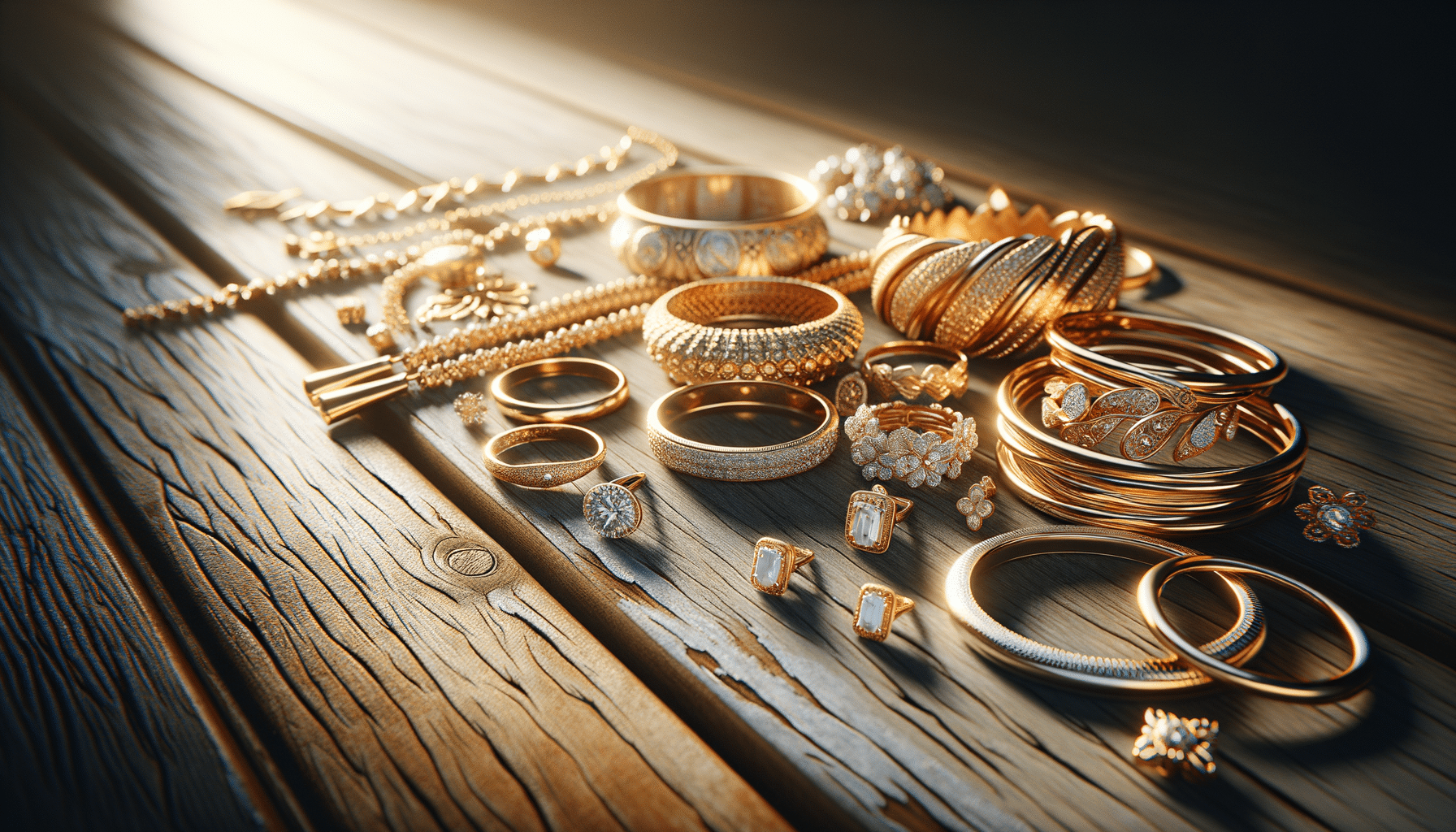
Learn more about the basics of gold jewelry
Introduction to Gold Jewelry
Gold jewelry has captivated human fascination for centuries, symbolizing wealth, beauty, and prestige. Its allure lies not only in its striking appearance but also in its enduring value. Understanding the basics of gold jewelry can help you appreciate its significance and make informed decisions when purchasing or gifting these precious items.
Gold’s malleability and resistance to tarnish make it an ideal material for crafting intricate designs. The journey of gold from raw material to finished jewelry involves a blend of artistry and science, ensuring each piece is unique and valuable. This article delves into the essentials of gold jewelry, providing insights into its composition, types, and care.
Composition and Purity of Gold
Gold’s purity is a crucial factor in determining the quality and value of jewelry. Pure gold, known as 24-karat gold, is too soft for everyday wear, so it is often alloyed with other metals to enhance its durability. Common alloys include silver, copper, and nickel, which also influence the color of the gold.
- 18-karat gold: Contains 75% pure gold, offering a balance of purity and strength.
- 14-karat gold: Comprises 58.3% pure gold, making it more durable and affordable.
- 10-karat gold: Contains 41.7% pure gold, often used in more affordable jewelry.
Gold’s purity is often marked on jewelry as a hallmark, providing assurance of its quality. Understanding these markings can help buyers make informed choices and avoid counterfeit products.
Types of Gold Jewelry
Gold jewelry comes in various forms, each offering unique characteristics and appeal. The most common types include:
- Yellow Gold: The classic color most associated with gold jewelry. It is a mixture of pure gold with copper and zinc, offering a warm and traditional appearance.
- White Gold: Created by alloying gold with white metals like palladium or nickel, white gold has a silvery appearance and is often plated with rhodium for added shine and durability.
- Rose Gold: Known for its pinkish hue, rose gold is an alloy of gold and copper. Its romantic color makes it a popular choice for engagement rings and other sentimental pieces.
Each type of gold offers distinct aesthetic qualities, allowing individuals to choose according to personal preference and style.
Caring for Gold Jewelry
Proper care can significantly extend the life and luster of gold jewelry. Here are some essential tips for maintaining your prized pieces:
- Regular Cleaning: Use a soft cloth or a gentle jewelry cleaner to remove dirt and oils. Avoid harsh chemicals that can damage the metal.
- Safe Storage: Store gold jewelry separately to prevent scratching. A soft pouch or lined jewelry box is ideal.
- Avoid Exposure: Remove gold jewelry when swimming in chlorinated water or handling household cleaners.
By following these simple care practices, you can preserve the beauty of your gold jewelry for generations.
Conclusion: The Timeless Appeal of Gold Jewelry
Gold jewelry remains a timeless symbol of elegance and status. Its enduring appeal lies in its versatility, beauty, and intrinsic value. Whether you’re drawn to the traditional allure of yellow gold or the modern sophistication of white gold, understanding the basics can enhance your appreciation and ensure your investment stands the test of time.
As you explore the world of gold jewelry, remember that each piece tells a story, reflecting both the skill of the artisan and the unique tastes of its wearer. With the right knowledge and care, gold jewelry can be a cherished heirloom, connecting generations through its enduring brilliance.


